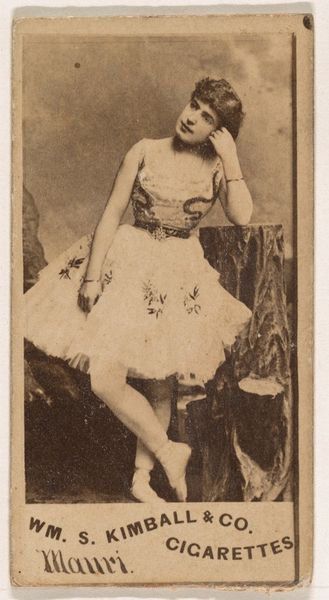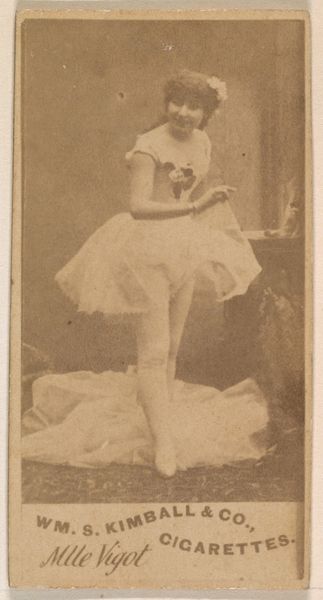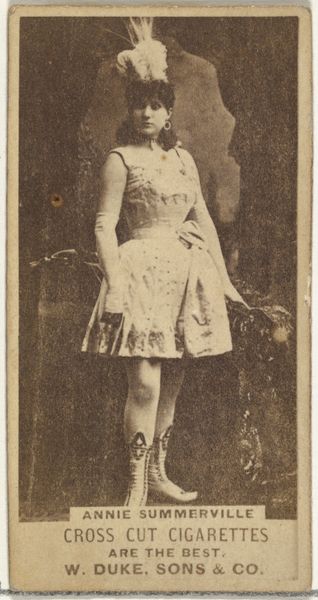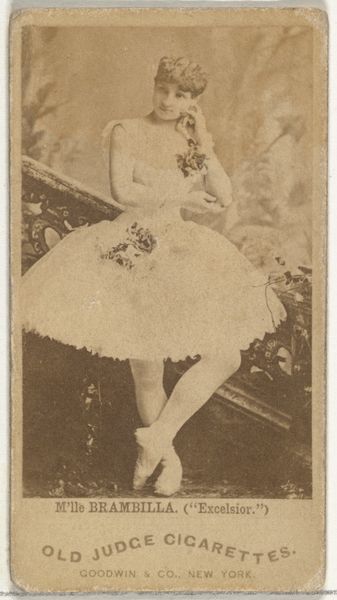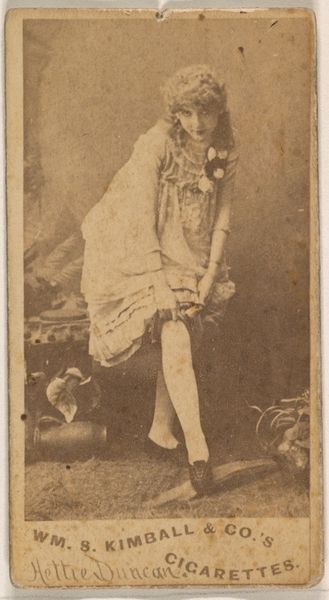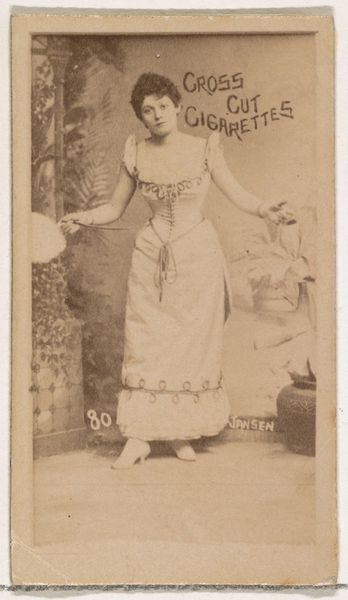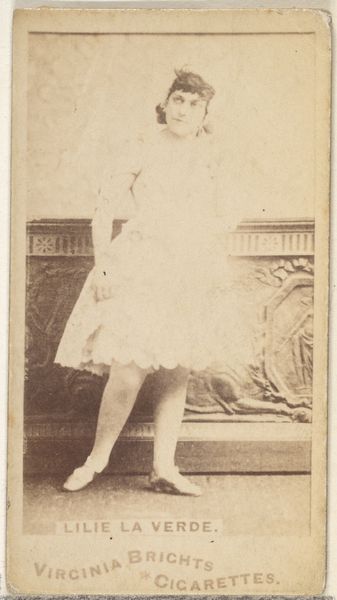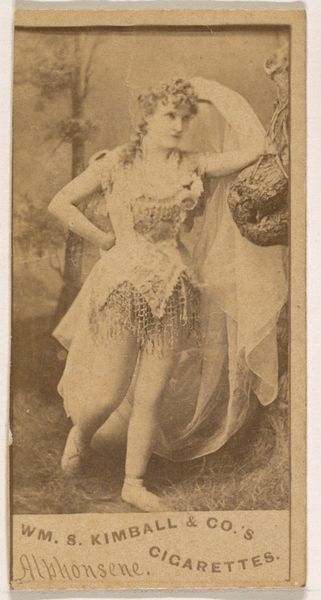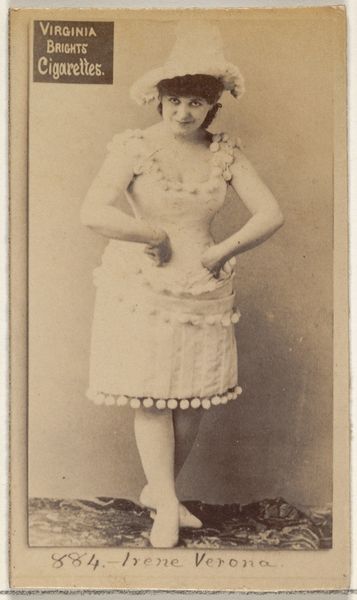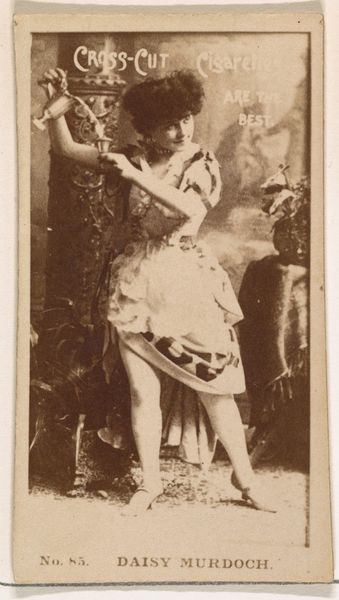
Card Number 170, Miss Montague, from the Actors and Actresses series (N145-2) issued by Duke Sons & Co. to promote Cross Cut Cigarettes 1880s
0:00
0:00
print, photography
#
portrait
# print
#
photography
#
19th century
Dimensions: Sheet: 2 5/8 × 1 7/16 in. (6.6 × 3.7 cm)
Copyright: Public Domain
Editor: Here we have a photograph entitled "Card Number 170, Miss Montague," printed in the 1880s by W. Duke, Sons & Co. as part of an advertisement for Cross Cut Cigarettes. The sepia tone gives it a real antiquated feel, doesn't it? I'm curious – what draws your eye in terms of its composition and use of photographic techniques? Curator: Indeed, the chromatic intensity resulting from the sepia print immediately establishes the tone. Let's consider the construction: the subject, Miss Montague, is situated in a carefully orchestrated mise-en-scène, the intentional placement of elements, suggesting a certain theatricality that needs dissecting. Note the careful deployment of light and shadow, which sculpts her form and adds a dimension, albeit subtly. What does this light, constrained and focused, evoke for you? Editor: It's almost like she is staged or framed, as if caught between these contrasting lights and shades, almost resembling a painting, which contradicts the medium's mechanical origin. Curator: Precisely! This calculated artificiality invites us to question the distinction between photographic "reality" and artistic construction. We can perceive through rigorous analysis the relationship of foreground and background as carefully considered semiotic constructs. Does this begin to clarify some of its complexities? Editor: Absolutely. The attention to detail within the constructed space, particularly its tonality, shows how art and commerce were so intimately entangled, adding complexity to a simple advertisement. Curator: I'm pleased that a close viewing from a structuralist perspective can still reveal underlying artistic intention and design within an everyday printed picture.
Comments
No comments
Be the first to comment and join the conversation on the ultimate creative platform.
